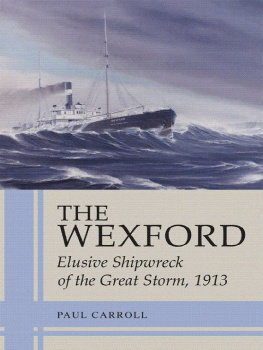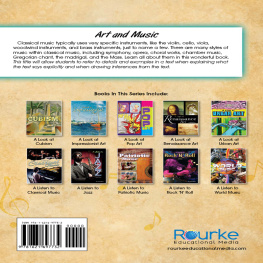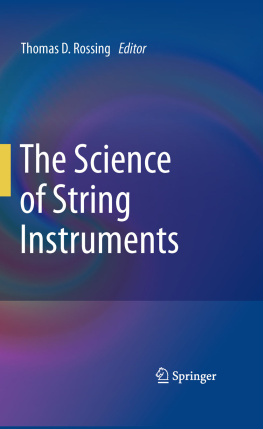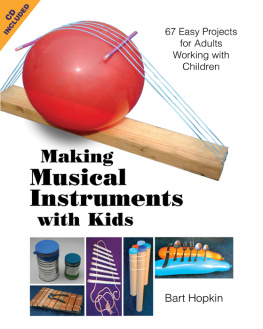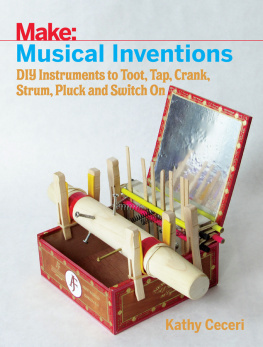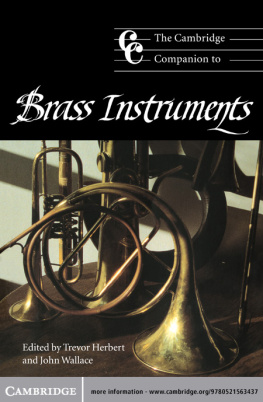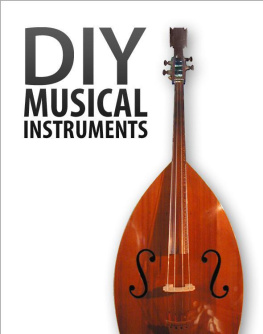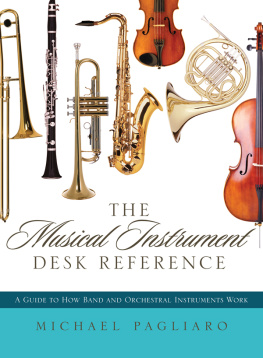BAROQUE WOODWIND INSTRUMENTS
For Helen
Baroque Woodwind
Instruments
A guide to their history,
repertoire and basic technique
PAUL CARROLL

First published 1999 by Ashgate Publishing
Published 2016 by Routledge
2 Park Square, Milton Park, Abingdon, Oxon OX 14 4RN
711 Third Avenue, New York, NY 10017, USA
Routledge is an imprint of the Taylor & Francis Group, an informa business
Copyright 1999 Paul Carroll
The author has asserted his right under the Copyright, Designs and Patents Act, 1988, to be identified as the author of this work.
All rights reserved. No part of this book may be reprinted or reproduced or utilised in any form or by any electronic, mechanical, or other means, now known or hereafter invented, including photocopying and recording, or in any information storage or retrieval system, without permission in writing from the publishers.
Notice:
Product or corporate names may be trademarks or registered trademarks, and are used only for identification and explanation without intent to infringe.
British Library Cataloguing-in-Publication Data
Carroll, Paul
Baroque wind instruments : a guide to their history, repertoire and basic technique
1. Woodwind instruments - History - 17th century 2. Woodwind instruments
- Methods 3. Music - 17th century 4. Music - 18th century
I. Title
788.209032
Library of Congress Cataloguing-in-Publication data
Carroll, Paul
Baroque woodwind instruments : a guide to their history, repertoire and
basic technique / Paul Carroll.
Includes bibliographical references and index.
1. Woodwind instruments 2. Performance practice (Music - 17th century.
3. Performance practice (Music) - 18th century. I. Title.
ML931.C37 1999
788.109032d c21
98-45856
CIP
MN
Transferred to Digital Printing 2014
ISBN 9781859283264 (hbk)
ISBN 9781138267497 (pbk)
Contents
I first thought of writing a book about baroque woodwind instruments while on a long walk on Box Hill late one summer afternoon with Dr David Jones of Christs College, Cambridge; between rehearsals for Susi Jeans Box Hill Festival we discussed the possibility of a joint effort. However, many years were to pass before I was asked by Ashgate to write such a book.
Many people help form an authors thoughts and direction, and in the case of a musician who turns his or her hand to writing, the list of influential people is often very long. First I thank my parents, Michael and Doreen, and sister Tracey Anne whose love and encouragement helped me to become a musician. I owe so much to my early teachers who encouraged me, especially Michael Frohnsdorf who cultivated my love of Vivaldi. I was fortunate to study at the local councilrun music school, The Newham Academy of Music, which enabled me to learn the bassoon, recorder, piano and harpsichord. My special thanks go to Edward Parker whose care and teaching helped my development at Newham, and to the many long-suffering local musicians who played in the towns symphony orchestra and who would often perform a Vivaldi-style concerto that I had hastily written on a Sunday, the following Monday evening. Mention has to be made of my longest-standing friend, Stephen Rinker, whose attempts to draw me away from the eighteenth century over the years has succeeded in part. His persistence has provided me with new perspectives both musical and philosophical.
I should like to thank my teachers at the Royal College of Music: Geoffrey Gambold, Phillip Cannon, Kerry Camden, John Francis and Millicent Silver. David Ward, the pianist and conductor, taught me a huge amount about music and about life and I will forever be in his debt for the care, friendship and support that he gave so freely.
It was not until I was in my mid-twenties that I met Gerrard McDonald who encouraged me to take up a number of baroque woodwind instruments, in addition to the baroque bassoon which I had already discovered. Gerrard was a great source of inspiration for many years and I will always be grateful to him for his help and friendship. Gerrard is one of a number of people who kindly read portions of this book and provided helpful suggestions on its improvement. Anthony Robson read and commented on the chapter on the baroque oboe; Dr David Rowland also made many useful suggestions. David has contributed much to my perception of music and I am most grateful to him for his kindness and friendship.
I would especially like to thank Sally Civval for her support during the writing of this book, as much of the work with which we are jointly involved, specifically with our company Music Management, fell on her shoulders during the books preparation. I must express my thanks to Beryl Civval for her support and kindness over the years, and especially to the late Norman Civval who influenced my life greatly.
I am extremely grateful to Konstanze Merkel for her help in translating sections of Quantz from German into English, often at extremely short notice, and to Jonathan Askey of the Early Music Shop in Bradford for providing photographs of instruments. Dr Janet Ritterman, Director of The Royal College of Music, and Dr Jeremy Cox, Dean and Deputy Director, have both given support and I would like to express my gratitude to the College for its kind financial assistance towards research for this book.
At Ashgate Publishing I would like to thank Agneta Munktell and especially Rachel Lynch who has been a great support during the creation of this book.
Of the many musicians who have influenced me over the years and who I have had the honour to play with I would like to thank Johannes Boer, Petronella Dittmer, Gwilym Hooson, Davitt Moroney, Ubaldo Rossi and Roderick Skeaping.
Finally I should like to thank Helen, my beloved wife, to whom this book is dedicated. Her tolerance of the disruption to our home during the books preparation was unlimited and she provided invaluable help in proofreading the text. Most of all I would like to thank her for her love and support which she has always given without reservation.
Bayswater, London 1999
CUP | Cambridge University Press |
EM | Early Music magazine |
Grove | Sadie, S. (ed.) (1980), The New Grove Dictionary of Music
and Musicians, London: Macmillan |
GSJ | Galpin Society Journal |
IUP | Indiana University Press |
JAMIS | Journal of the American Musical Instrument Association |
NEMA | National Early Music Association |
OUP | Oxford University Press |
STIMU | Foundation for historical performance practice, Utrecht |
UNP | University of Nebraska Press |
URP | University of Rochester Press |
Notation
For convenience, the following method has been adopted:

Figures
Plates
between pages 86 and 87
Introduction
The late seventeenth century through to the end of the eighteenth century saw the development of woodwind instruments and the composition of a vast body of music for those instruments. For some people this period, which encompasses the work of Vivaldi, Bach, Handel and Mozart, provides all the music that they would ever desire both to listen to and to play. During this period a large amount of music for domestic consumption was written for a growing amateur market, a market which has re-emerged in the latter part of the twentieth century. With the regrowth of this market the makers of reproduction baroque and classical instruments have added to the list of instruments available to the point where it is possible to obtain virtually any baroque instrument as a faithful copy. In 30 years the standard of performance by professionals on these instruments has risen enormously. The advent of digital recording and the compact disc have also contributed to a massive growth in the amount of recorded baroque music on historical instruments. This baroque industry has grown to service a demand from the public which has in turn grown from a desire to rediscover something of the past, a desire to recreate original ideas and in some way discover something of that enigmatic and always controversial word, truth.
Next page

